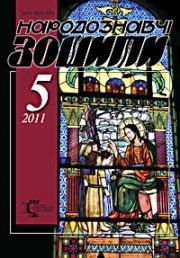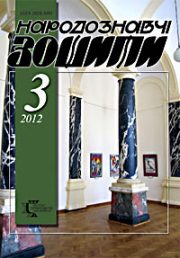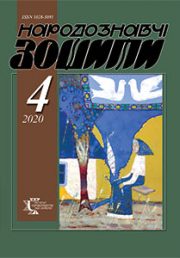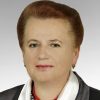The Ethnology Notebooks. 2025. № 3 (183), 589—596
UDK [730.012.02:004.9]”20″
DOI https://doi.org/10.15407/nz2025.03.589
3D-TECHNOLOGIES IN THE SYSTEM OF ARTISTIC EXPRESSIVE MEANS OF MODERN SCULPTURE
MAKSYMCHUK Oleksandr
- Master, Presidential Scholar,
- Lecturer at Terebovlya Professional
- College of Culture and Arts,
- 1, Tarasa Shevchenko St., 48100, Terebovlya,
- Ternopil region, Ukraine,
- Contacts: e-mail: olexandr.maxymchuk@gmail.com
Abstract. The role of 3D technologies in transforming artistic expressive means of modern sculpture is analyzed.
The key stages of the development of digital tools in sculptural modeling are highlighted, from initial design to the final realization of the work.
The specifics of the interaction of traditional techniques with digital practices are revealed, which determines the emergence of new forms of plastic thinking and an experimental approach to materiality.
The emphasis is on expanding the visual and communicative potential of sculpture through the integration of virtual, augmented reality, and additive technologies.
The problem under study is relevant given the active development of interdisciplinary connections between art and technology, which form new artistic paradigms in the space of public and museum environments.
The article aims to provide a comprehensive analysis of the influence of 3D technologies on the evolution of the figurative language of modern sculpture. The sources were scientific publications on the theory of art, the results of artistic practices of modern authors, data from exhibition activities, and examples of digital sculptural production.
The object of the study is modern sculpture, and the subject is 3D technologies as a tool of artistic expression.
The research methodology is based on the principles of interdisciplinarity, comparative analysis, interpretation of the visual image, systematization, and generalization.
Keywords: 3D modeling, 3D printing, 3D technologies, sculpture, computer graphics, animation, prosthetics, visuali za tion.
Received 3.06.2025
REFERENCES
- Shcherbakov, Serhii, & Revonok, Nataliia. (2023). The influence of augmented reality technologies on the perception of sculptures in exhibition spaces, collection of scientific works. Ukrainian Academy of Arts (P. 200). Kyiv [in Ukrainian].
- Sutherland, I.E. (1963). Sketchpad, a man-machine graphical communication system (P. 176). Massachusetts Institute of Technology; Department of Electrical Engineering.
- Androshchuk, G.O. (2016). 3D printing in the era of innovative technologies: regulatory issues. Intellectual Property in Ukraine, 5, 69, 70 [in Ukrainian].
- (2019). Modern additive technologies and 3D printing. Bulletin of the National Technical University «KhPI». Series: Problems of improving electrical machines and devices. Theory and practice, 1, 74 [in Ukrainian].
- Parke, F.I. (1972). Computer generated animation of faces. Proceedings of the ACM annual conference (Vol. 1).
- Strutynska, O.V. (2018). Current state and prospects for the development of three-dimensional modeling and printing technologies. Scientific journal of the National Pedagogical University named after M.P. Dragomanov (Issue 20 (27), pp. 88—94). Kyiv [in Ukrainian].
- Fetter, W. (1962). The Art Machine. The Journal of Commercial Art & Design, 2 (Vol. 4, p. 36).







